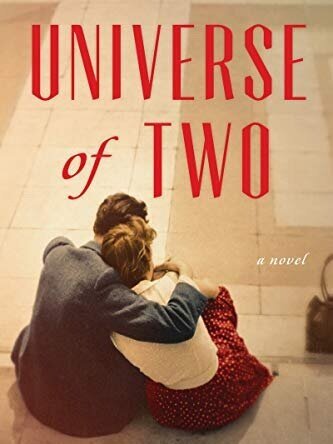Meet Betsy
Welcome to my virtual studio. As both a writer and designer, I’m driven by a curiosity about the world. In my studio, I take that curiosity and use it to create new worlds. Explore to find out more about me, my books, and my thoughts on writing as well as the thoughts of friends who stop by the studio. If you’ve got something you’d like to share reach out to me through the contact form. I’d love to hear from you. Scroll down to read what’s been happening in the studio.
I am migrating to Substack over the next year for long-form writing and news updates so check me out over there. For now I’ll leave this page up so you can read through the archive.

Review: Of Women and Salt
This is a captivating novel that is woven across time, cultures, and borders. Ms. Garcia transports the reader effortlessly from an 1866 Cuban cigar plantation to a modern immigrant detention center in Texas, to a daring border crossing with her lush, direct narrative.

Review: The Invisible Life of Addie LaRue
The Invisible Life of Addie LaRue by V.E. Schwab is a master class in how to carry a premise to its full potential.

Review: SAPIENS
A non-fiction story-arc is often the arc the reader takes from who they were before they read a book to where they are afterward. Sapiens is the epitome of this concept . . .

Review: Universe of Two
What a pleasure for the reader to see an already fine novelist grow and get even better with his skill and commitment to excellence. Vermont author Stephen P. Kiernan’s past works were fine, much more than competent novels, but his newest— Universe Of Two —is what Italians art aficionados would call, il tuo capolavoro— his masterpiece . . .

Review: A Wreath for Emmett Till
The story it tells and the moving way it tells it is well worth a review, but what I want to talk about is the structure. Emmett Till’s story is told in a heroic crown of sonnets. A sonnet is a fourteen-line poem in iambic pentameter. A crown of sonnets is a sequence of fifteen interlinked sonnets in which the last line of each is the first line of the next and the final sonnet is made up of the first lines of each of the preceding fourteen poems.

Review: The Ten Thousand Doors of January
The cover of this book is a doorknob and when opened readers are swept into a journey through world after wondrous world created by Harrow through the evocative use of sensory detail. It is gritty soil between fingers, moisture hanging thick in the sea air, and the cracked feel of aged leather as January explores the collection of relics of the imposing mansion that confines her. Opening the book at random I read the lines . . .

The Club Dumas
A quick review of what Nolan Libby loves about The Club Dumas:
The book was better. We’ve all heard this and it’s usually true. It’s why one of my guilty pleasures is reading source material after seeing a movie. The Club Dumas, however, swims in exposition veiled as a conversation to move the hero, Lucas Corso, on his task to authenticate a demonic tome.

Horrorstör
Besides keeping me awake late into the night the comedy-horror novel, Horrorstör, by Grady Hendrix made me laugh out loud at the best integration of graphic design with narrative ever done in horror paperback. There is a lot to love, most especially that the novel is a masterclass in the use of setting.
The book feels and looks like an Ikea catalog. Before readers crack the cover they are primed for the setting. The novel . . .

The Dutch House
I could chose a lot of things to talk about when it comes to The Dutch House by Ann Patchett. It has layered characters, a compelling story, and a setting that is as much a character as the narrator. Nothing stood out for me more, though, than the way Patchett takes readers with her moving back and forth through time.
As the story builds, we jump between the narrator’s childhood, teenage years, middle and late adulthood in the natural way of someone recalling their life. But Patchett uses very few obvious sign-post statements. Instead of highlighting each transition by saying something like ‘It was 1969 and I was twelve,' Patchett keeps you with her simply by referencing whether or not the characters are still smoking, what school the narrator is coming home from or whether he and his sister are inside or outside the Dutch House in their car. This style of transition feels organic, but it also sets readers up so when they eventually learn why the narrator went to those schools, is sitting in that car or even why he smokes it’s like discovering something about a good friend. The result is a narrative that feels organic and effortless. The skill to pull it off is masterful.

